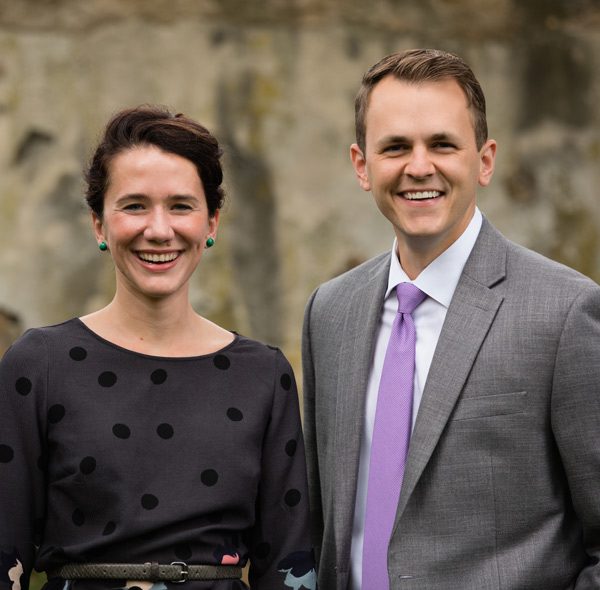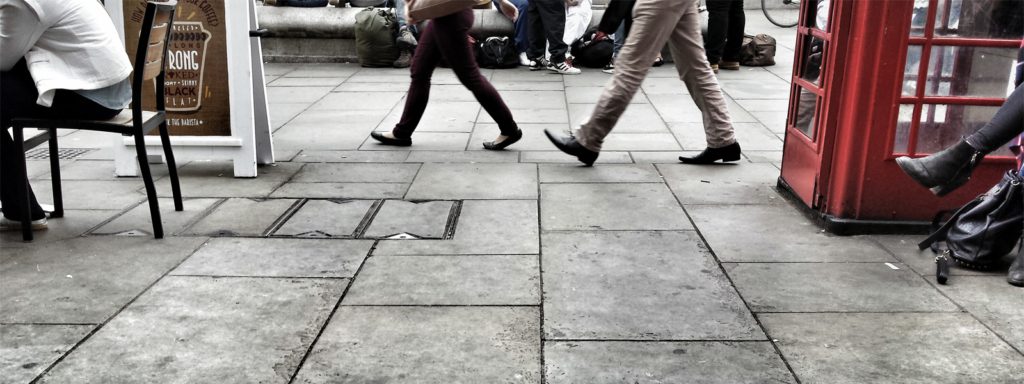In 2014, Lucy Marcil began a pediatric residency at Boston Medical Center and Boston Children’s Hospital. There, she committed to an Urban Health and Advocacy track, which encourages physicians to examine how economics and public policy affect health. From time spent in the Peace Corps in Namibia, Marcil was already versed in the well-documented link between economic instability and health.
To Marcil, it was evident that many parents in the waiting room at Boston Medical Center were experiencing that circuitous relationship firsthand: Parents shouldering the burden of their children’s medical expenses struggled to afford basic preventative health measures that could reduce the risk of illness in the long run. When Marcil and Michael Hole—a fellow resident in the Urban Health and Advocacy program—asked families if they’d looked into the Earned Income Tax Cred (EITC), most either hadn’t heard of it, or were deterred by the complicated forms required to file for it.
A common and legitimate complaint is that the forms are complex. And though tax prep services offer a workaround for that hurdle, the upshot is that the aid often comes with a steep fee. Moreover, though fee-free tax prep centers exist, they are not always easy to get to—especially for families who lack reliable transportation as a result of cyclical poverty. The mother of one of Hole’s patients experienced this firsthand.

StreetCred co-founders Lucy Marcil and Michael Hole.
Considered one of the most effective anti-poverty programs on the books, the EITC can be as much as a $3,400 boost for a single family with just one child. In the 2016 tax year, the average EITC amount received by an eligible tax-filer was $2,455—enough to have a marked stabilizing effect for many living paycheck to paycheck. The credit gives hard-working families a path to economic mobility, allowing them to cover costs that take a backseat to more immediate needs when payday rolls around.
At the time of the 2010 Census, 27 million American households received the credit—5.4 million of whom were subsequently lifted above the poverty line. The numbers have been comparable according to the most recent available data, yet research suggests that as many as one in four taxpayers eligible for the credit don’t claim it.
After Hole referred his patient to a fee-free tax prep center, she got nowhere. She took two buses and a train to travel there, only to find it closed. It was open when she had another opportunity to go back a week later. But she didn’t have the right paperwork. Speaking to Hole about her frustration, she raised an incisive point: “I waited for 30 minutes in your waiting room today. Can’t I just do my taxes here?” The comment begot the concept of StreetCred in 2015.
By bringing tax filing assistance to their waiting room in Boston, Marcil and Hole saw an opportunity to not just shrink the distance between a critical benefit and those who need it, but to make it accessible in a place a staggering majority of families with young children visit regularly: The doctor’s office.
In the 2016 tax season, during which StreetCred was able to provide filing services from their one site in Boston, the group helped about 200 families claim over $400,000. That rose to $1.2 million for about 600 families in the 2017 filing season, when StreetCred expanded to four sites in Boston. This past tax season, with a fifth site added in Boston, and a total of four new sites spread across New Haven, Asheville, and Austin, StreetCred’s early rough estimates show only more growth: About $1.7 million returned to about 1,000 families.
Marcil and Hole are both practicing pediatricians. But StreetCred’s prolific growth is evidence that it’s not just an altruistic side hustle of two young doctors. With another tax season in the books, Marcil and Hole have every reason to be excited about the prospects of scaling and transporting the waiting room tax-help model far beyond their Boston base.
Scaling and transporting the StreetCred model
StreetCred isn’t the first innovative approach to health built on the premise of meeting communities where they’re at. “We’ve taken inspiration from a variety of innovative design models attempting to bridge medicine and other social sectors,” Hole says. But the StreetCred team saw some inherent limitations in existing models.
The secret sauce for StreetCred came from taking the best of those cross-sector models—like Health Leads, Medical Legal Partnership, and One Degree—with some of the ways tech industry leaders geared toward middle class Americans (like ride-sharing and grocery delivery services) have found to deliver on-demand, individualized service.
The StreetCred model consists of a partnership between health centers and local voluntary tax preparation services, which StreetCred then integrates into clinics. In these early forays beyond its New England roots, the basic StreetCred model has so far held up with only slight variance. “The roles of these partners do vary a bit by location depending on the strengths and capacity of each partner,” Marcil says.
“The biggest difference is that our national staff is based out of Boston, so we do a lot more remote consulting – phone calls, video chats, emails – as well as in-person visits to the non-Boston sites,” Marcil says. Anticipating growth in forthcoming tax years, she adds, “We’re also finessing the design for a support model to ensure each site gets high-quality, consistent support.”
Early victories and 2020 goals

The final days of this tax season coincided with Marcil’s participation in the 2018 TED Conference in Vancouver. Marcil, a 2018 TED Fellow, is hopeful that the TED community might mean more open doors for StreetCred. “Everything from new sites (hospitals/clinic/health systems),” Marcil begins, “to new financial empowerment partners as we integrate more wealth-building services into our portfolio. Tech gurus who can help us create software to make our services more client-friendly and efficient, marketing and design brains, startup and entrepreneurship experts…” In aggregate, all these pieces could put StreetCred on track to achieve an ambitious goal: By 2020, StreetCred hopes to have delivered $10 million to 5000 families.
“We are ambitious because we think the children of America deserve nothing else,” Hole says. “Growing up poor systematically limits health and opportunity. We have an obligation as pediatricians to tackle this problem.”
But an eight-figure goal is just a number without the stories of individual lives changed along the way. With changes to names and some details, Marcil and Hole recalled a few of the most memorable families StreetCred has been able to help*:
- Beatrice, a 55-year-old raising a three-year-old grandson. Beatrice and her grandson lived on $7,000 yearly (43% of the federal poverty level), income she worked hard for in her part-time jobs. Last tax season, she paid $400 for private tax preparation (17% of her tax credit, 6% of her annual income). Using StreetCred, Beatrice got free tax prep help and was able to keep all of her $2,400 return. She used to buy previously unaffordable “luxuries” for her grandson, including toiletries, fresh produce, winter blankets, and a nightlight.
- Angela, a Mexican immigrant and widow with a 12-year-old son. Angela paid $300 for tax prep help last year and ultimately never filed her return because of confusion over a house deed. StreetCred helped Angela file for this year and her previous year’s return. Combined, her refunds totaled $10,000, which she used to fix her car to reliably get to work on time.
- Rachel, a single mother of three. Following a divorce, Rachel’s abusive ex-husband claimed their three children on his tax return for credits. StreetCred educated her about her own right to claim her dependents. She received $5,000 on her refund, which helped her avoid eviction from her apartment.
Marcil and Hole don’t exactly have their backs against the wall when it comes to educating lawmakers about the virtues of the EITC. It’s one of the few pieces of federal tax code that enjoys consistent bipartisan support. Occasionally, a trickle of lawmakers propose limiting taxpayers eligible for the credit. These proposals have been unsuccessful, thus far, thanks to proactive advocacy by nonprofits, such as the Tax Alliance for Economic Mobility, and stories like Beatrice, Angela, and Rachel’s that illustrate the credit’s power.
“We’re best at advocating when we listen and take our patients’ stories to policymakers,” says Hole. “It is far more powerful and relevant hearing from the people we serve.” As confirmation of Hole’s observation, the comment of a single mother of a toddler that effectively began StreetCred has since amounted to over $3 million returned to taxpayers with children.
___
*Names and specific details have been changed to protect families’ identities
Also about EITC: Connecting Advocacy to Local Impact (June 2016)



